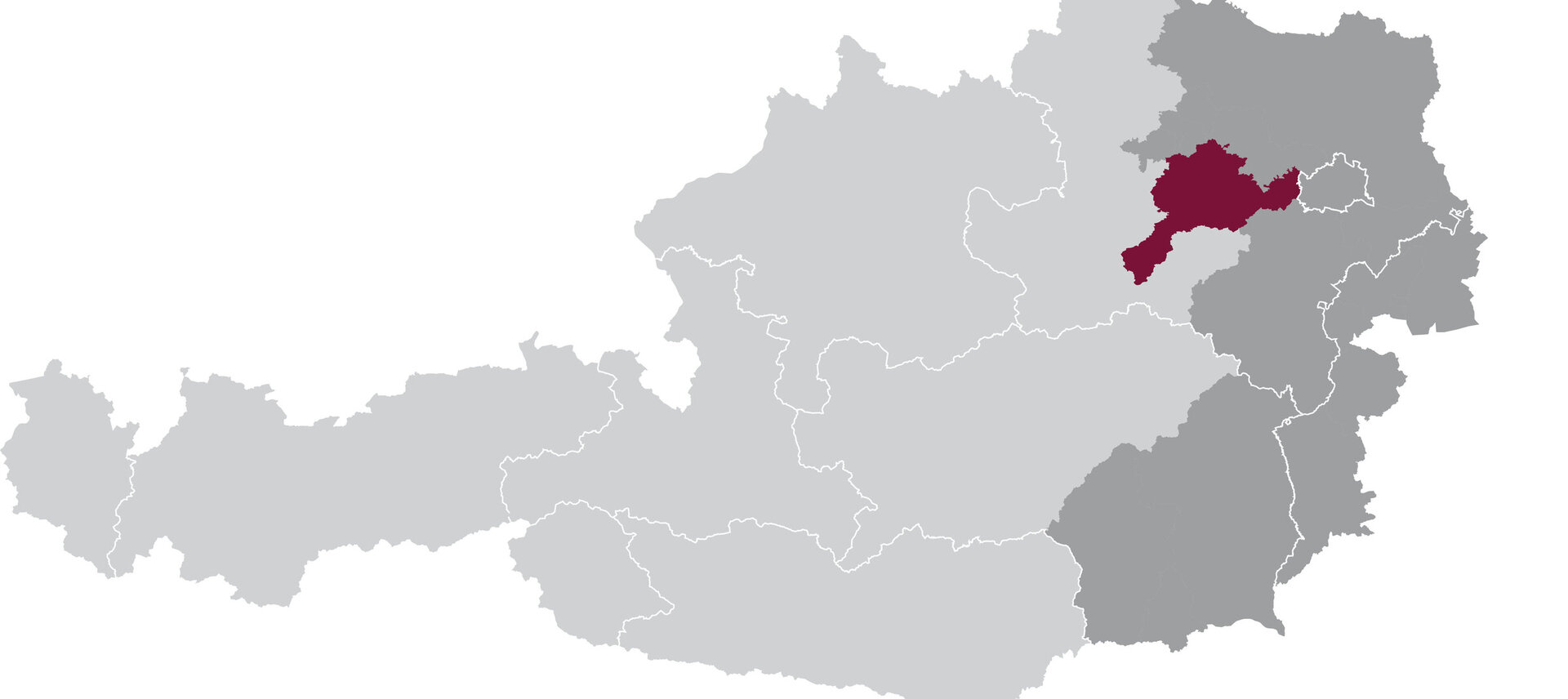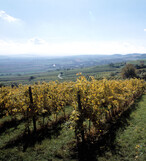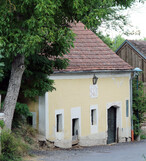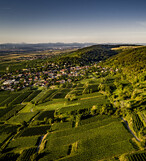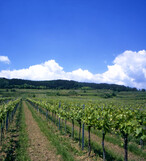REGION & WINE
The landscape of the Traisental wins favour in the eye of the beholder with its gentle hills and diminutive vineyards. Fertile fields which arise from the banks of the clear Traisen – one of three tributaries of the Danube giving their name to winegrowing regions – gradually give way to small terraced parcels of vines. The distinctive nature of wines from the Traisental is due in good part to the terroir, soils predominantly composed of calcareous sedimentary rock. These challenge the vines to dig their roots deeper, and give the wines an individualistic profile with robust body and firm backbone. The mixture of eroded debris, sands and other sediments in the region characterises the foreland of the Alpine-Carpathian arc. The mother material of the Traisental’s soils consists primarily of clay, marl, sand or sandstone, gravel, conglomerates and limestone. This makes minerality the feature that conveys the flavour, supports the acidity and thus promotes the longevity of the wines. Special climatic factors – Pannonian influences from the east and, at the same time, cold air from the foothills of the Alps – bring warm days and cool nights, thus ensuring very fine aromaticity and spicy finesse.
In no other Austrian winegrowing region does the Grüner Veltliner claim such a high proportion of available vineyard area: with around 60%, the Traisental is undisputedly number one. These wines can be described as fresh, fruity and spicy, as well as showing backbone and finesse. Extremely long-lived Reserve wines with their robust texture and body – from great vineyard sites such as Zwirch, Berg, Alte Setzen, Hochschopf, Sonnleiten or Fuchsenrand –have won fame both at home and abroad. The second most important variety of the Traisental is the Riesling, with some 6% share of the vineyards. These are elegant, powerful and aromatic wines with a distinctive mineral note. Regionally typical wines from these two varieties have been allowed to bear the “ Traisental DAC ” appellation of origin – and, where appropriate a village or vineyard name – on the label, since the 2006 vintage. The remaining two-thirds of the Traisental’s vineyards offer a home to a broad palette of varieties, from Chardonnay to Zweigelt, marketed with the designation of origin “Niederösterreich”.
The Traisental is an attractive destination for outings, inviting to wine lovers, hikers, cyclists and those interested in all aspects of culture. The discovery of grape seeds from the early Bronze Age confirm the region’s more-than-ancient wine tradition, which dates back well before the advent of Roman viticulture. A modern cultural program of multifoliate variety is offered by nearby Sankt Pölten, capital city of the federal state of Lower Austria. From this southernmost point of the winegrowing region, many paths open up into idyllic villages with their wine estates and traditional taverns: from Statzendorf, Unterwölbling and Oberwölbling to Nussdorf, Reichersdorf, Getzersdorf and Inzersdorf, to Stollhofen, Frauendorf and Gemeinlebarn.
